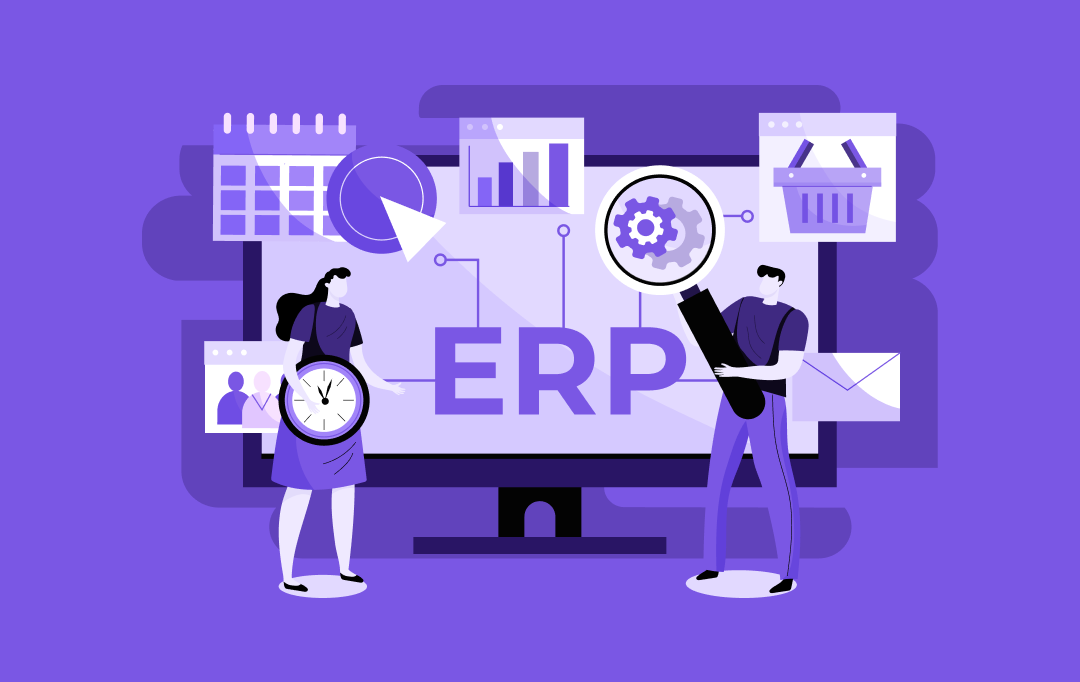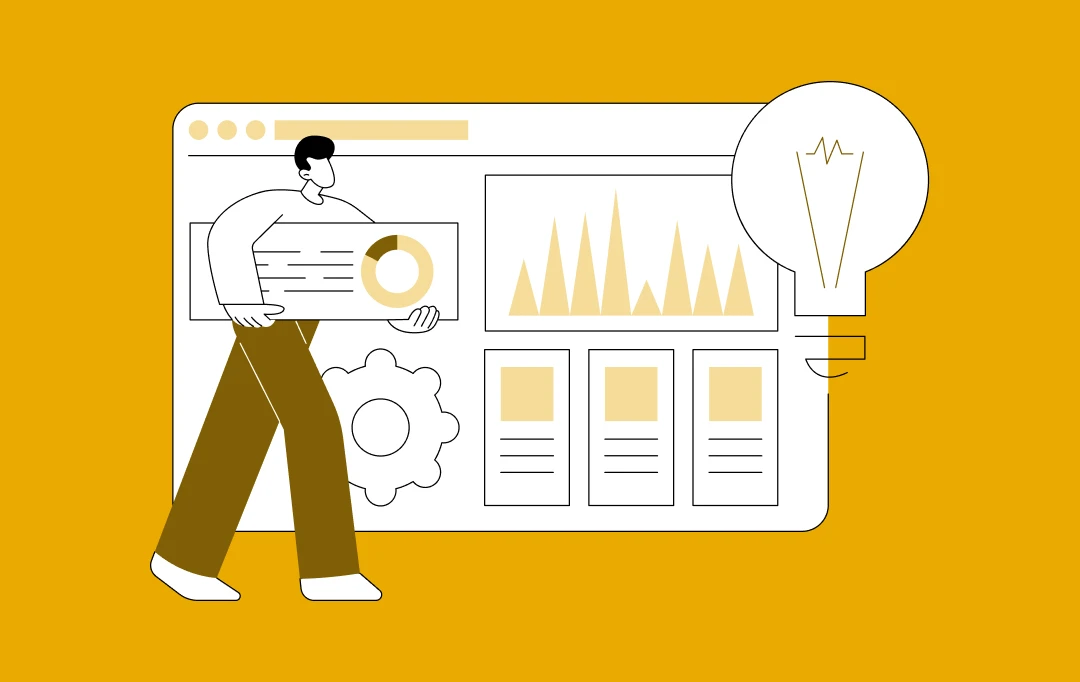- Understanding the Need for Renewable Energy Software Development for Businesses
- Application of Different Types of Renewable Energy Software Across Domains
- Use Case 1: Simulation and Modelling Software
- Use Case 2: Energy Management Systems
- Use Case 3: Grid Management Software
- Use Case 4: Remote Monitoring Software
- Use Case 5: Compliance and Reporting Software
- Benefits of Leveraging Custom Renewable Energy Software Solutions
- Advanced Forecasting and Scheduling Capabilities
- Real-Time Monitoring and Control of Renewable Energy Assets
- Significant Cost Savings
- Predictive Maintenance
- Core Features Offered by a Custom Renewable Energy Software
- Interoperability
- Scalability
- Compliance and Reporting
- Energy Storage Management
- Demand Response Management
- Asset Performance Management
- Guide to Create Renewable Energy Software: How to Build it Right
- Step 1: Comprehend the Scope and Requirements of Your Project
- Step 2: Run Extensive Market Research
- Step 3: Pick Out the Right Tech Stack and Team
- Step 4: Structure an Architectural Blueprint for Your Software
- Step 5: Build, Run, and Test the Software
- Step 6: Ensure Up-to-date Maintenance
- How Much It Costs to Build a Renewable Energy Software
- Future of Renewable Energy Software Development
- How Appinventiv Shapes up the Renewable Energy Software Development
- FAQs
- Q. Why is renewable energy technology important?
- Q. How can businesses benefit from renewable energy software development?
- Q. How to develop renewable energy software for your business?
Did you know that in 2022 alone, the global carbon dioxide emissions from fossil fuels and industries totalled around 37.15 billion metric tons?
As more and more strategies are implemented to reduce carbon footprint and combat climate change, the need for renewable energy software development for businesses cannot be overstated. Through the years, it has been emerging as the driving force for transformation toward a sustainable future– especially in this hour of need.
However, aside from saving the planet, these technological solutions carry significant benefits and importance for organizations worldwide. Improved efficiency, real-time monitoring, and increased sustainability are just a few examples of its implementation.
Let’s decode all about energy sector software development– from its benefits and the features of renewable energy software to its applications in the business world and how you can build it right!
Understanding the Need for Renewable Energy Software Development for Businesses
Imagine this: a future where manual interventions are minimized, issues and challenges are detected early and addressed proactively, and downtime is reduced.
Sounds too good to be true, right? But what if we tell you that all these are not only possible but also within near reach? By utilizing the advanced capabilities of custom renewable energy software development, businesses can achieve all these benefits and more.
For example, with the help of such custom software, enterprises can engage in efficient resource management. By analyzing historical data and leveraging the power of predictive algorithms, renewable energy software solutions facilitate the optimization of energy production while maximizing the utilization of available resources.
Furthermore, by investing in energy sector software development, businesses can pave the way for better integration and management of renewable energy assets. By centralizing data from various sources, be it wind turbines, solar panels, or energy storage systems, you get to access a deeper outlook of their operations.
Application of Different Types of Renewable Energy Software Across Domains
Reports suggest that the global renewable energy software market will be worth $2.06 trillion by the end of 2032, implying the growing application of renewable energy software. Needless to say, over the years, more and more companies are switching to these custom solutions to streamline their operations.
On that note, let us explore a few renewable energy software use cases to understand which domains are at the forefront of leading this revolution across the energy sector.

Use Case 1: Simulation and Modelling Software
Simulation and modeling software enables businesses to design and test different renewable energy systems before they are built. With the help of this technology, engineers can simulate different conditions and optimize the systems for efficacy and reliability.
For example, enterprises can model the behavior of solar panels based on different weather conditions or get detailed insight related to the aerodynamics of wind turbine blades.
Example: Sandbar Solar, a solar developer from Northern California, recently unveiled a new microgrid, which was modeled using the HOMER Pro. This islanded off-grid electricity system is designed to power the corporate headquarters of the company, situated in the city of Santa Cruz.
Use Case 2: Energy Management Systems
Energy Management System (EMS) facilitates the efficient management and operation of various renewable energy sources. From monitoring energy production to managing power distribution and, most importantly, guaranteeing that the energy supply is at par with the demand, these solutions play a pivotal role.
Example: Samwoh Corporation, a leading construction and engineering firm situated in Singapore, utilizes Schneider Electric EcoStruxure. This implementation paves the way for maximized energy efficiency, better visibility, and control of the building’s energy utilization.
Use Case 3: Grid Management Software
Renewable energy sources such as solar can be intermittent. Therefore, businesses need to find a solution that will help to maintain a stable energy supply. This is exactly what grid management software does. It controls the flow of energy from various sources, maintains a crucial balance between supply and demand, and plays a crucial role in the management of energy storage.
Example: Enel, a multinational company in the energy sector, leveraged the capabilities of EcoStruxure ADMS to access a visual, mathematical model of its distribution network. This includes detailed models of distribution generation, demand response, and smart grid management data.
Use Case 4: Remote Monitoring Software
Remote monitoring software plays a very important role in controlling and monitoring renewable energy systems, such as wind turbines or solar farms, all from one single location. This includes tracking performance, making necessary adjustments, and taking proactive measures to address any issues. The ultimate result? Smoother and greater efficiency in operations.
Example: Valeco Group utilizes the Windfit system to optimize its new wind firm. Windfit boxes primarily use smart sensors to assess the operation of turbines with the wind, thereby providing more accurate indicators. This has ultimately helped Valeco Group identify any necessary adjustments for the optimal operation of its new wind assets.
Use Case 5: Compliance and Reporting Software
As the world moves forward towards a sustainable future, the importance of renewable energy software platforms that facilitate adherence to environmental regulations and reporting cannot be overstated. This kind of energy or carbon management software not only help businesses to minutely keep track of their carbon footprint, and energy usage, but also results in increased compliance with relevant regulations.
Example: Petrobras, a Brazil-based oil, gas, and chemical organization, has leveraged the capabilities of the SAP EHS management tool to handle all environmental and health aspects of its business operations, achieve legal compliance, and reduce overall costs.
[Also Read: Compliance Management Software Development – Benefits, Use Cases, Process and Costs]
Benefits of Leveraging Custom Renewable Energy Software Solutions
Implementing renewable energy software development has enabled many businesses to witness apparent changes, especially in the utility sector. Here are some of the benefits of renewable energy software development that you can also harness to propel your business towards consistent growth.

Advanced Forecasting and Scheduling Capabilities
Renewable energy software typically makes use of sophisticated algorithms and data analysis to predict the availability of renewable energy sources, like wind patterns, and solar radiation. This, in turn, enables businesses to better schedule the dispatch of electricity to the grid accordingly.
All this ultimately results in a significant reduction of grid stability, better and more accurate forecasting of the supply of renewable energy, and a reliable power supply.
Real-Time Monitoring and Control of Renewable Energy Assets
Another classic feature of renewable energy software is its ability to provide real-time monitoring of renewable energy assets. By leveraging this capability, companies can access a transparent view of their renewable energy portfolio and monitor the performance and output of their solar panels or hydroelectric generators. This functionality is also important in a solar panel monitoring app, allowing for precise management and optimization of solar resources.
Based on the insights gathered, enterprises can then make better-informed decisions related to resource allocation, thereby optimizing the overall efficiency and performance of the utility grid.
Significant Cost Savings
By integrating renewable energy software, businesses can enjoy significant savings. For example, by optimizing the efficiency of their renewable energy assets, companies can reduce their dependence on expensive and carbon-intensive energy sources such as fossil fuels.
Predictive Maintenance
Fueled by cutting-edge AI technologies, custom renewable energy software lets businesses predict, keep track of, and evade all potential system-based risks in operations. With visibility to rising maintenance issues or potential equipment failure, you can avoid operational downtime by creating maintenance routines, leading to systems running smoothly.
Core Features Offered by a Custom Renewable Energy Software
Let’s take a closer look at these key features of renewable energy software that empower businesses.

Interoperability
More often than not, enterprises face difficulties creating data silos, with information isolated and inaccessible across different systems. Renewable energy software development for businesses can help in this aspect as they can easily integrate with IoT devices and other existing technologies to further advance their functionalities.
This helps to ensure that you get to access all your crucial data for performing comprehensive analysis, which, in turn, leads to better and more efficient management of your energy-producing assets.
[Also Read: IoT in the Oil and Gas Industry – Benefits, Applications, Challenges and Possible Solutions]
Scalability
Another notable feature of renewable energy software is its ability to handle increasing volumes of data collected from sensors, trackers, and users. This is especially true for cloud-based architecture with auto scaling capabilities that optimize computing resources based on usage.
Compliance and Reporting
With the help of renewable energy software development, businesses can automate regulatory compliance processes, thereby ensuring they meet all the reporting requirements. These custom services facilitate the management of renewable energy certificates, leading to greater transparency and accountability.
Energy Storage Management
Renewable energy software often includes advanced management features for energy storage systems like batteries. This capability allows businesses to efficiently charge and discharge storage systems based on energy production and demand forecasts.
[Also Read: How AI in Demand Forecasting is Enhancing Supply Chain Efficiency]
Demand Response Management
This feature enables businesses to adjust their electricity usage in response to supply conditions on the grid. By integrating demand response tools, renewable energy software can automatically adjust usage. This helps in balancing the grid while also helps in cost savings and enhanced energy efficiency.
Asset Performance Management
Renewable energy software provides detailed analytics on the performance of energy assets. This feature tracks the output of equipment like wind turbines and solar panels, using data analytics to predict potential failures and optimize asset performance.
Guide to Create Renewable Energy Software: How to Build it Right
Let’s move on to one of the most crucial aspects of exploring all about renewable energy software–how to build renewable energy software.
There are various factors affecting renewable energy software development. This step-by-step guide has been created keeping all of these factors in mind, supporting your vision to implement sustainable practices for your renewable energy endeavor.

Step 1: Comprehend the Scope and Requirements of Your Project
The first and perhaps the most important step in the renewable energy software development process is to define the project idea clearly. This includes understanding the unique requirements, the target audience, technical specifications, or the key features of your renewable energy project.
Step 2: Run Extensive Market Research
Once you have enough clarity about the project requirements, it is now time to understand the market. Take as much time as you need, but carefully research the existing software solutions for renewable energy. Make a note of their functionalities, limitations, and opportunities for improvement.
Step 3: Pick Out the Right Tech Stack and Team
The next step is to choose the team of developers and a dedicated tech stack.
Since the renewable energy software development cost can be quite high, it is essential that the team selection process is approached with extensive care (considering the budget as well). After all, expertise works as fuel for a business. Getting the right domain experts can grant you an excellent head start.
Once you have finalized the development team, you can then brainstorm to evaluate different software development technologies– from the choice of programming languages to cloud platforms and databases. Select the one that you think fits best with the business project.
Step 4: Structure an Architectural Blueprint for Your Software
Create a high-level design for the software system, which will include every minute detail, starting from the data flow, user interface, and other crucial system components. However, make sure that there is room for future integrations to allow seamless scalability.
Step 5: Build, Run, and Test the Software
It is now time to build the renewable energy software. This is a very important stage since it involves various crucial components such as writing code, testing the software, and fixing any bugs or issues.
An extra tip? Conduct user and functional testing to ensure optimal software performance. Once you are satisfied with all the results of these tests, you can then deploy it on the targeted platform and integrate the software with other existing systems and data sources.
Step 6: Ensure Up-to-date Maintenance
It would be a rookie mistake to think that the renewable energy software development process ends with the deployment phase. Once the software is installed, carefully continue to monitor its performance and provide ongoing support. Ensure that it is always updated and at par with the needs of the renewable energy project.
This concludes the process of building renewable energy software. The provided steps may differ depending on individual project-based requirements and the various factors affecting renewable energy software development for businesses. Therefore, ensure visibility and a clear roadmap for the development team to navigate your vision.
How Much It Costs to Build a Renewable Energy Software
To give you a brief overview, the cost associated with building a renewable energy software can vary from $30,000 to $200,000. There are several factors that impact the estimated cost of development including the complexity of the software, features to be integrated, technologies used, location of the hired software development team, third-party integrations required, etc.
For example, more complex functionalities like real-time data analytics, machine learning for predictive maintenance, or integration with existing hardware systems can significantly raise costs.
Aside from the factors that directly influence development costs, ongoing expenses such as maintenance, updates, and server costs also contribute to the total investment. Regular software updates are crucial to keep up with technological advancements and regulatory changes in the renewable energy sector.
[Also Read: What is the Cost of Maintaining an App in 2024?]
In addition to this, scalability is another vital factor that can influence the long-term costs of renewable energy software development. As your business expands and processes more data or needs new features, the software might require upgrades to keep up with growth. By planning for these upgrades early, you can manage future costs better and ensure that the software remains effective without needing a complete redesign.
Future of Renewable Energy Software Development
According to McKinsey, ‘Unlocking the magnitude of energy and resources required to improve people’s lives, in a way that does not choke the environment, cannot be done without the power of digital to improve efficiency and manage complexity.’
Needless to say, the future of renewable energy technologies for businesses looks undoubtedly promising. Some of the revolutionary trends in this aspect include the integration of green artificial intelligence (AI), machine learning, and IoT. By leveraging the advanced capabilities of these technologies, businesses can unlock increased autonomous operations, forecast effective maintenance, and optimize energy generation and management.
Furthermore, in recent times, we’ve seen AI technologies change the renewable energy industry. AI handles huge amounts of data to forecast energy production and use, while IoT links devices for smooth grid control. Blockchain makes energy trading safe and clear—picture neighbors selling solar power to each other. Also, you can’t overlook how digital twins are becoming more important in renewable energy software.
With the ability to digitally replicate physical systems and optimize operations, digital twin technology is emerging as a core asset, maximizing efficiency in the energy sector with real-time monitoring.
As key tech implementations continue to make their way into the energy sector, leveraging renewable energy software development is the only way to move forward frictionless.
How Appinventiv Shapes up the Renewable Energy Software Development
Renewable energy software development for businesses is undoubtedly an essential tool to manage and optimize various renewable energy projects. From advanced forecasting and scheduling capabilities to real-time monitoring and compliance, the list of benefits that it brings to the table is endless.
However, every digital transformation journey needs an able partner. Appinventiv understands this need and therefore offers its expertise as a leading energy software development company to empower energy businesses worldwide with its custom software services.
From energy management system development to custom utility management solutions, we offer a wealth of skills for all your software needs.
What’s more? We adhere to robust security measures and strict regulatory compliances so that you can always guarantee the utmost safety of your business’s sensitive information.
Check out our custom energy sector software development services today and guarantee the highest standards of quality and efficiency for your business with Appinventiv.
FAQs
Q. Why is renewable energy technology important?
A. Renewable energy technologies primarily work by converting natural phenomena into useful forms of energy. They are indigenous and non-polluting, holding the ability to deal with both concerns about supply security and environmental issues.
Q. How can businesses benefit from renewable energy software development?
A. One of the major benefits of renewable energy software development for businesses is that it helps to reduce carbon footprint– one of the primary contributors to global warming. Additionally, it also leads to more stable energy costs, improved brand image and customer perception, and guaranteed long-term sustainable energy supply.
Q. How to develop renewable energy software for your business?
A. To build renewable energy software for your business, you need to first identify the unique requirements and scope of your project. This will enable you to build a strong foundation for the renewable energy software development process.
Following this, you can move on to the next steps, which are conducting extensive market research, assembling a development team, designing the software architecture, and finally deploying the software.
Q. What are the important roles of renewable energy systems in industries?
A. Renewable energy systems across industries play diverse roles. Here’s a look at some of its most crucial implementations.
- Reduced costs
- Improved sustainability
- Avoid supply disruptions
- Automated regulatory compliance
- Mitigation of associated risks and much more.
Q. What are the main challenges in developing software for renewable energy systems?
A. Some of the key challenges in building software for renewable energy systems:
Cybersecurity risks: Protecting critical energy infrastructure from cyber threats.
Regulatory compliance: Adhering to evolving energy laws and industry standards.
Integration of diverse energy sources: Ensuring seamless interoperability between solar, wind, hydro, and other renewables.
Scalability: Designing software that can adapt to future energy demands and technological advancements.
Grid stability management: Balancing energy supply and demand to prevent outages.
Real-time data processing: Managing large volumes of energy data for instant decision-making.
Q. What are the advantages of adopting an agile approach in renewable energy software development?
A. Following an agile approach during renewable energy software development leads to a series of benefits:
- Faster iterations
- Adaptability to changing energy regulations
- Improved collaboration among stakeholders
- Early issue detection
- Enhanced software scalability for evolving energy needs



Custom Development or White Label Solutions: Which is Right for Your Business?
Key takeaways: 77% of companies are prioritizing digital transformation; the right tech approach is crucial for staying competitive. Custom development offers tailored solutions for unique needs, flexibility, and long-term scalability. Whereas, white-label solutions provide quick market entry, cost-efficiency, and easy customization for standard needs. Appinventiv’s expertise helps you navigate custom development vs white-label to choose…

ERP Integration in Australia - Why It Is Essential and How to Do It Right
Key takeaways: ERP integration enables operational efficiency, reduced costs, and enhanced decision-making. Healthcare, finance, manufacturing, retail, and all the other sectors are benefiting from ERP integrations in Australia. While ERP integration can be costly, ranging from AUD 45,000 - AUD 450,000, it leads to significant long-term savings and scalability. Compliance with Australian regulations is critical,…

Predictive Analytics Software Development - Features, Benefits, Use Cases, Process, and Cost
Key Takeaways Predictive analytics helps businesses shift from “what has happened” to "what will happen," enabling proactive strategies rather than reactive ones. Real-time analytics and AI integration are driving the growth of predictive analytics, making it more accurate, accessible, and critical for business success. Custom predictive analytics solutions can enhance customer satisfaction, reduce costs, and…

















